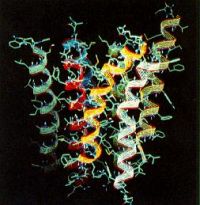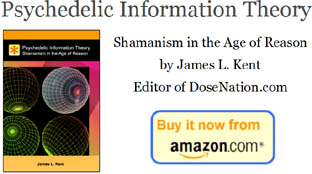Serotonin 2A receptor pathway distinct from hallucinogens
 |
Scientists from The Scripps Research Institute have figured out the pathway serotonin uses to mediate biological functions. They discovered that it is distinct from the signaling pathways used by hallucinogenic substances.
The study is published in the October 6 issue of the Journal of Neuroscience. The paper is titled "Serotonin, But Not N-Methyltryptamines, Activates the Serotonin 2A Receptor via an Arrestin2/Src/Akt Signaling Complex in Vivo."
Dr. Bohn and her team showed that serotonin signals through the serotonin 2A receptor by recruiting a regulatory protein called arrestin2. They found that the actions of serotonin at the receptor are far different from those produced by hallucinogenic N-methyltryptamines, a class of naturally occurring substances found in several plants and in minute amounts in the human body and includes the abused drug DMT. The study found that the N-methyltryptamines activate the serotonin 2A receptor independently of arrestin2.
The 5-HT2A receptor is a G-protein coupled receptor (GPCR). Here's a brief bit on arrestin's role in cellular signaling from WikiPedia:
In response to a stimulus, GPCRs activate heterotrimeric G proteins. In order to turn off this response, or adapt to a persistent stimulus, activated receptors need to be silenced. The first step is phosphorylation by a class of serine/threonine kinases called G protein coupled receptor kinases (GRKs). GRK phosphorylation specifically prepares the activated receptor for arrestin binding. Arrestin binding to the receptor blocks further G protein-mediated signaling, targets receptor for internalization, and redirects signaling to alternative G protein-independent pathways.
So as far as I can tell, this means that hallucinogens are likely more potent agonists at the 2A receptor than 5-HT itself, because they do not recruit arrestin to mediate the duration of the resulting G-protein signal cascade? Anyone else want to jump in here with speculation?
[Thanks Tomas!]
|

Recently @ DoseNation
|
|






















Even Terence McKenna hasn't done it more than 30 times during his wonderous life, according to himself on one of his lectures.
The comments posted here do not reflect the views of the owners of this site.